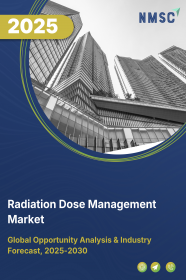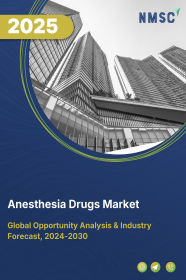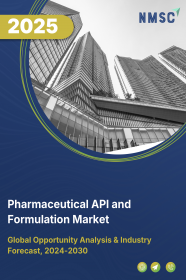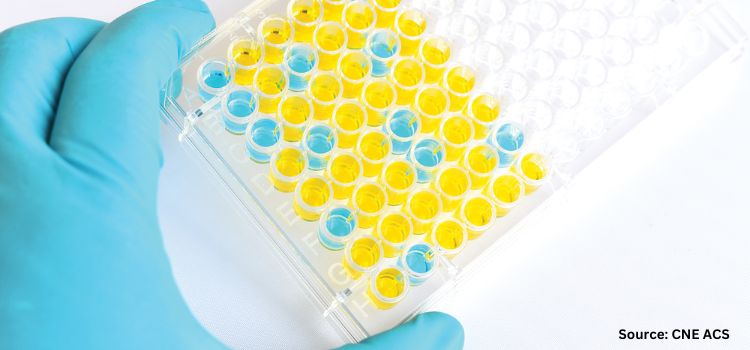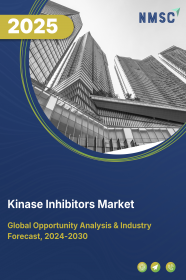
Kinase Inhibitors Market by Type (Tyrosine Kinase Inhibitors, Multikinase Inhibitors, Threonine Kinase Inhibitors, and Others), by Application (Oncology, Inflammatory Diseases, Autoimmune Disorders, and Others), and by End-Users (Pharmaceutical Companies, Research Institutes, and Healthcare Facilities) – Global Opportunity Analysis and Industry Forecast, 2024– 2030
US Tariff Impact on Kinase Inhibitors Market
Trump Tariffs Are Reshaping Global Business
Kinase Inhibitors Market Overview
The global Kinase Inhibitors Market size was valued at USD 57.12 billion in 2023 and is predicted to reach USD 104.21 billion by 2030 with a CAGR of 9.0% from 2024-2030.
The kinase inhibitors market also known as kinase blockers market specializes in the development and commercialization of small molecules designed to inhibit the activity of specific enzymes known as kinases that play a crucial role in cell signaling and regulation. These inhibitors work by selectively targeting and blocking the action of kinases involved in various diseases, particularly cancers, thereby disrupting tumor growth and progression.
Key benefits include enhanced therapeutic efficacy, decreased side effects compared to traditional chemotherapy, and the potential for personalized treatment based on genetic profiles. This targeted approach offers significant advantages over alternative treatments, enabling more effective and safer management of complex diseases. Moreover, the increasing prevalence of targeted therapies is significantly fueling the demand for these inhibitors, positioning them as essential elements in modern therapeutic strategies.
Market Dynamics and Trends
The rise in global cancer cases drives the growth of the market due to the increasing of kinase inhibitors market demand for targeted therapies that specifically address tumor development and progression. As the need for precise treatments expands, pharmaceutical companies focus on developing innovative kinase inhibitors to meet this demand.
According to the report published by the World Health Organization (WHO) in 2024, the global cancer burden is projected to reach over 35 million cases by 2050, marking a 77% increase from the estimated 20 million cases in 2022. The surge in cancer cases increases the need for targeted therapies, driving pharmaceutical companies to accelerate the development of innovative kinase inhibitors, thereby propelling market expansion.
Moreover, the increasing global healthcare expenditure drives the market growth by providing broader access to advanced therapies and innovative treatments for various diseases such as cancer and autoimmune disorders. As governments and private organizations invest more in healthcare, there is a stronger emphasis on developing targeted therapies including tyrosine kinase inhibitors that deliver more effective treatment options.
As per the latest report published by the World Bank Group, the global healthcare expenditure accounted for USD 1,265.62 per capita in 2021 compared to USD 1,179.65 per capita in 2020, marking a growth of 7%. This rise in healthcare spending enhances treatment access, ultimately benefiting patients and advancing the market.
Furthermore, the rising R&D investment in the pharmaceutical sector propels the growth of the market by emphasizing targeted therapies for complex diseases such as cancer and chronic inflammatory conditions. This investment enables pharmaceutical companies to pursue innovative drug development strategies while improving their understanding of disease mechanisms and the role of kinases in signaling pathways.
For instance, in August 2022, Theseus Pharmaceuticals made an R&D investment of USD 7.3 million in 2022 compared to USD 4.5 million in 2021, marking a 62.22% growth. Similarly, in May 2024, Merck & Co made an R&D investment of USD 30.5 billion in 2023, reflecting a rise of 126% compared to previous year. The surge in R&D investment significantly accelerates the development of targeted therapies, driving the market expansion in the pharmaceutical sector.
However, the high cost of kinase inhibitors serves as a significant restraint on market growth. These elevated prices deter healthcare providers and patients from adopting these treatments, limiting accessibility and reducing the overall growth of the market.
On the contrary, the integration of nanotechnology in kinase inhibitors is expected to create ample growth opportunities for the market in the future.
This innovation enhances the delivery and efficacy of these inhibitors by enabling targeted therapy that reduces side effects and improves bioavailability. As a result, pharmaceutical companies develop more effective and personalized treatment options, leading to increased patient compliance and better therapeutic outcomes.
Market Segmentations and Scope of the Study
The kinase inhibitors market report is segmented on the basis of type, application, end-users, and region. On the basis of type, the market is divided into tyrosine kinase inhibitors, multikinase inhibitors, threonine kinase inhibitors, and others. On the basis of application, the market is divided into oncology, inflammatory diseases, autoimmune disorders, and others.
On the basis of end users, the market is divided into pharmaceutical companies, research institutes, and healthcare facilities. The regional breakdown includes regions such as North America, Europe, Asia-Pacific, and the Rest of the World (RoW).
Geographical Analysis
North America holds the dominant in kinase inhibitors market share and is expected to continue its dominance during the forecast period. This is attributed to the increasing initiatives from the government and various organizations to promote the development of advanced treatment solutions. Such efforts enhance research and development capabilities while accelerating the approval process for new inhibitors.
For instance, in June 2024, the U.S. Food and Drug Administration approved Augtyro (repotrectinib), a next-generation tyrosine kinase inhibitor (TKI) for the treatment of patients with NTRK-positive locally advanced or metastatic solid tumors. This approval process promotes the growth of the market by increasing the availability of advanced treatments and encouraging further innovation in the sector.
Moreover, the rising incidences of cancer cases accelerates the growth of the industry by creating an increased demand for effective treatment in the region. The surge in cancer cases drives pharmaceutical companies to focus on developing kinase inhibitors that block specific enzymes responsible for cancer cell growth and proliferation.
As per the latest report published by the Canadian Cancer Society, approximately 247,100 new cancer cases are projected in Canada, along with an estimated 88,100 cancer-related deaths in 2024. The surge in cancer cases highlights the critical role of these inhibitors in addressing the growing need for targeted cancer therapies that propels the kinase inhibitors market growth.
On the other hand, Asia-Pacific is expected to show a steady rise in the kinase inhibitors industry due to the increasing healthcare expenditure in countries such as India, China, and Japan that enhances access to advanced therapies and drives the development of innovative treatment options.
According to the latest report published by the World Bank Group, India’s healthcare expenditure accounted for USD 74 per capita in 2021 compared to USD 64 per capita in 2020, reflecting a growth of 16%. This rise in healthcare spending enhances access to treatment and supports ongoing research and development initiatives in the market.
Furthermore, the rising investment in pharmaceutical research and development to enable the creation of new and advanced treatments for diseases such as cancer and autoimmune disorders is driving market growth. These investments foster the development of innovative therapies, including kinase inhibitors to treat various diseases including cancer.
According to the latest report of the China’s Ministry of Science and Technology stated that country’s pharmaceutical industry is expected to see over 10% annual growth in R&D investment during the 14th Five-Year Plan period (2021-2025). This substantial investment in R&D accelerates the development of advanced therapies that ultimately fuels the market growth.
Competitive Landscape
Various key players operating in the kinase inhibitors industry are AstraZeneca, Boehringer Ingelheim International GmbH., Bristol-Myers Squibb Company, Eisai Co., Ltd., Cipla Inc, Eli Lily and Company, Jiangsu Hansoh Pharmaceutical Group Co., Ltd, Takeda Pharmaceutical Company Limited, Novartis AG, Pfizer Inc., and others. These companies continue to adopt market development strategies including launches to maintain their dominance in the market.
For instance, in July 2024, Novartis launched Scemblix (asciminib), a novel kinase inhibitor targeting adults with newly diagnosed Philadelphia chromosome-positive chronic myeloid leukemia (Ph+ CML). This advanced therapy demonstrates enhanced molecular response rates in clinical trials, positioning it as a significant advancement in the kinase inhibitor industry.
For instance, in June 2024, Boehringer Ingelheim planned to launched Zongertinib a tyrosine kinase inhibitor for the treatment of HER2-mutated non-small cell lung cancer (NSCLC) in the first half of 2025. This launch aims to provide a broader array of treatment options for lung cancer patients, further contributing to the growth of the kinase inhibitors sector by addressing specific genetic mutations and enhancing the effectiveness of cancer therapies.
Key Benefits
-
The report provides quantitative analysis and estimations of the kinase inhibitors market from 2024 to 2030, which assists in identifying the prevailing market opportunities.
-
The study comprises a deep-dive analysis of the current and future kinase inhibitors market trends to depict prevalent investment pockets in the industry.
-
Information related to key drivers, restraints, and opportunities and their impact on the kinase inhibitors market is provided in the report.
-
Competitive analysis of the players, along with their market share is provided in the report.
-
SWOT analysis and Porters Five Forces model is elaborated in the study.
-
Value chain analysis in the market study provides a clear picture of roles of stakeholders
Kinase Inhibitors Market Key Segments
By Type
-
Tyrosine Kinase Inhibitors
-
Multikinase Inhibitors
-
Threonine Kinase Inhibitors
-
Others
By Application
-
Oncology
-
Inflammatory Diseases
-
Autoimmune Disorders
-
Others
By End-Users
-
Pharmaceutical Companies
-
Research Institutes
-
Healthcare Facilities
By Region
-
North America
-
The U.S.
-
Canada
-
Mexico
-
-
Europe
-
The UK
-
Germany
-
France
-
Italy
-
Spain
-
Denmark
-
Netherlands
-
Finland
-
Sweden
-
Norway
-
Russia
-
Rest of Europe
-
-
Asia-Pacific
-
China
-
Japan
-
India
-
South Korea
-
Australia
-
Indonesia
-
Singapore
-
Taiwan
-
Thailand
-
Rest of Asia-Pacific
-
-
RoW
-
Latin America
-
Middle East
-
Africa
-
Key Players
-
AstraZeneca
-
Boehringer Ingelheim International GmbH.
-
Bristol-Myers Squibb Company
-
Eisai Co., Ltd.
-
Cipla Inc
-
Eli Lily and Company
-
Jiangsu Hansoh Pharmaceutical Group Co., Ltd
-
Takeda Pharmaceutical Company Limited
-
Novartis AG
-
Pfizer Inc.
REPORT SCOPE AND SEGMENTATION:
|
Parameters |
Details |
|
Market Size in 2023 |
USD 57.12 Billion |
|
Revenue Forecast in 2030 |
USD 104.21 Billion |
|
Growth Rate |
CAGR of 9.0% from 2024 to 2030 |
|
Analysis Period |
2023–2030 |
|
Base Year Considered |
2023 |
|
Forecast Period |
2024–2030 |
|
Market Size Estimation |
Billion (USD) |
|
Growth Factors |
|
|
Countries Covered |
28 |
|
Companies Profiled |
10 |
|
Market Share |
Available for 10 companies |
|
Customization Scope |
Free customization (equivalent up to 80 working hours of analysts) after purchase. Addition or alteration to country, regional, and segment scope. |
|
Pricing and Purchase Options |
Avail customized purchase options to meet your exact research needs. |

















 Speak to Our Analyst
Speak to Our Analyst



